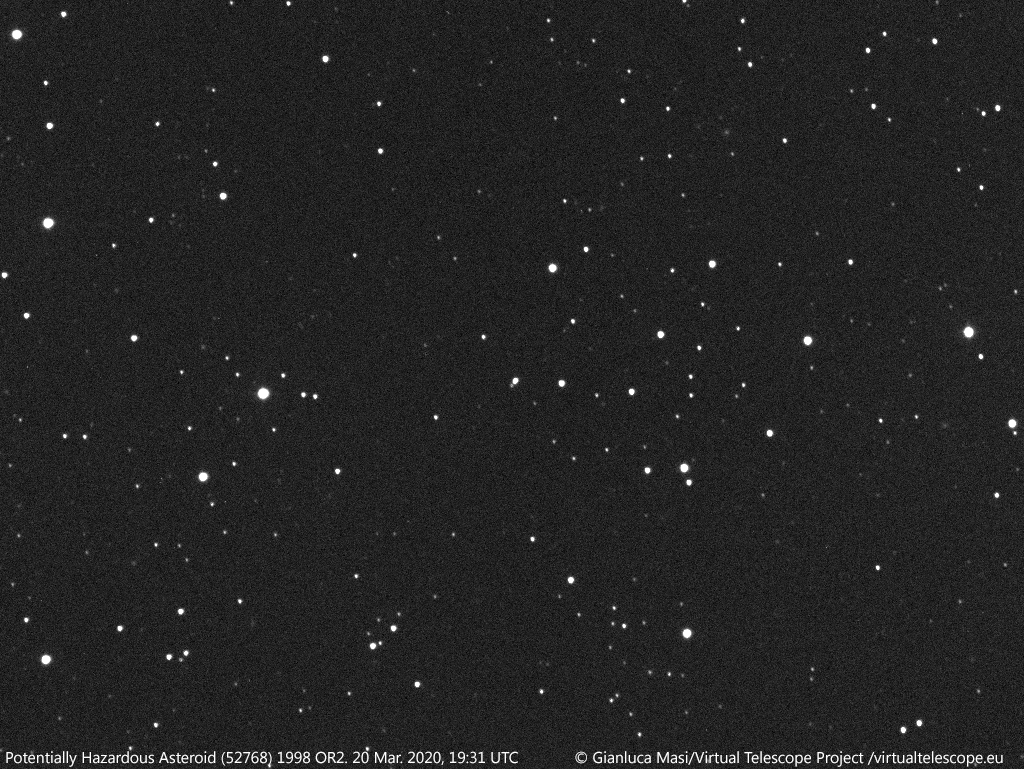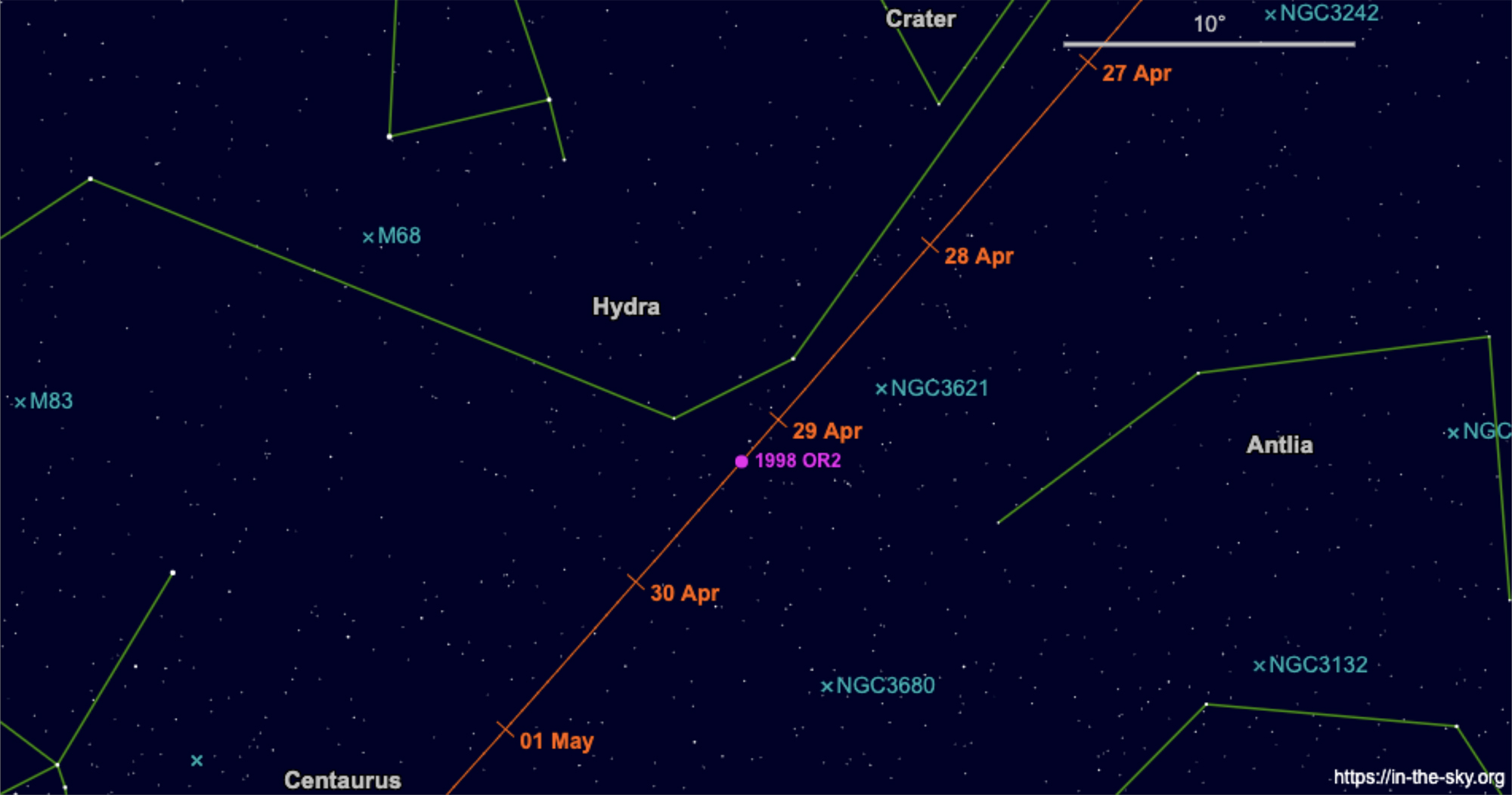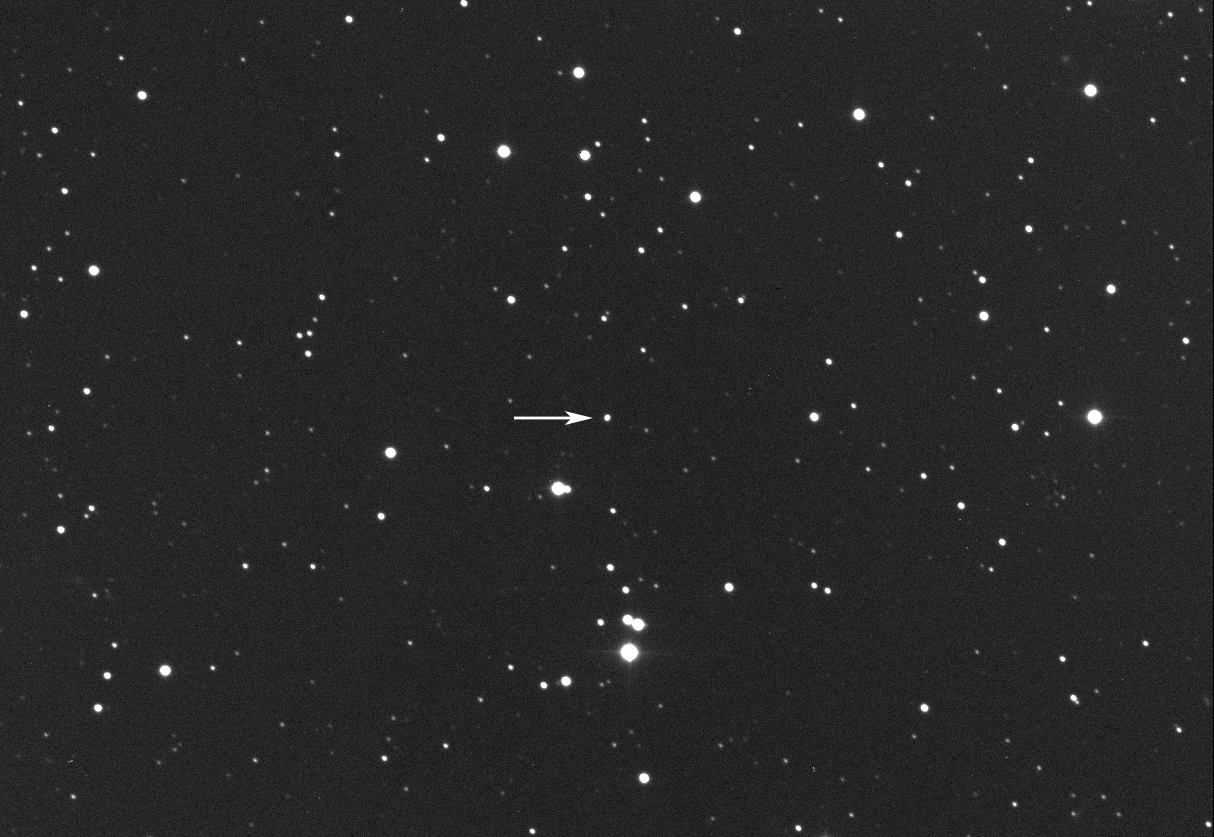Huge asteroid 1998 OR2 will zip harmlessly by Earth April 29. See the latest telescope photos.
Amateur astronomers will be able to see asteroid 1998 OR2 with small telescopes during its flyby of Earth on April 29.
The huge "potentially hazardous" asteroid 1998 OR2 is just a few weeks away from its close encounter with Earth, and you can watch the giant space rock's approach online or with a small telescope.
While asteroid 1998 OR2 is large enough to wreak havoc on Earth if it were to strike our planet, it won't come anywhere near a collision when it flies by on April 29.
"On April 29, asteroid 1998 OR2 will safely pass by 3.9 million miles/6.2 million kilometers," scientists with NASA's Asteroid Watch program said in a Twitter update as they debunked a Daily Express report warning of the flyby. "There is no warning about this asteroid," they added in another Twitter post.
Related: Potentially dangerous asteroids (images)
More: Near-Earth asteroids: Famous flybys & close calls (infographic)
NASA estimates that the asteroid is between 1.1 miles and 2.5 miles (1.8 to 4.1 kilometers) wide. According to Asteroid Watch, 1998 OR2 will pass and that it will pass by at a safe distance that is more than 16 times the average distance between Earth and the moon. While NASA classifies asteroids that come within less than 4.6 million miles (7.5 million km) of Earth as "potentially hazardous," there's nothing to worry about with 1998 OR2.
"The orbit is well understood and it will pass harmlessly at 16 times the distance to our moon," NASA wrote on Twitter. "No one should have any concern about it."
The asteroid is currently too faint to see with most backyard telescopes, but it has been visible in larger telescopes for a while. The Virtual Telescope Project, a remote observatory founded by astrophysicist Gianluca Masi of the Bellatrix Astronomical Observatory in Italy, has been keeping an eye on the asteroid for about a month, periodically releasing new images of the space rock as it races through the cosmos at more than 19,000 mph (31,000 km/h).
Breaking space news, the latest updates on rocket launches, skywatching events and more!
Asteroid 1998 OR2 is currently only visible in professional telescopes, like the ones Masi uses at the Virtual Telescope Project. However, amateur astronomers will have a chance to see the asteroid for themselves when it becomes visible in smaller telescopes during its close approach.
According to EarthSky.org, asteroid 1998 OR2 is expected to reach a visual magnitude of 10 or 11 (magnitude is a measure of an object's brightness). This means it will be visible in at least 6-inch or 8-inch telescopes, weather permitting.
If you aren't able to watch the flyby, you can still see asteroid 1998 OR2 in a live webcast from the Virtual Telescope Project. Hosted by Masi, the free livestream will feature telescope views of the asteroid on April 28, starting at 2 p.m. EDT (1800 GMT).
- The hunt for dangerous asteroids: Here's how scientists do it
- NASA wants a new space telescope to hunt asteroids that may threaten Earth
- Planetary defense joins NASA's menu for next decadal survey focus
Email Hanneke Weitering at hweitering@space.com or follow her @hannekescience. Follow us on Twitter @Spacedotcom and on Facebook.
OFFER: Save at least 56% with our latest magazine deal!
All About Space magazine takes you on an awe-inspiring journey through our solar system and beyond, from the amazing technology and spacecraft that enables humanity to venture into orbit, to the complexities of space science.

Hanneke Weitering is a multimedia journalist in the Pacific Northwest reporting on the future of aviation at FutureFlight.aero and Aviation International News and was previously the Editor for Spaceflight and Astronomy news here at Space.com. As an editor with over 10 years of experience in science journalism she has previously written for Scholastic Classroom Magazines, MedPage Today and The Joint Institute for Computational Sciences at Oak Ridge National Laboratory. After studying physics at the University of Tennessee in her hometown of Knoxville, she earned her graduate degree in Science, Health and Environmental Reporting (SHERP) from New York University. Hanneke joined the Space.com team in 2016 as a staff writer and producer, covering topics including spaceflight and astronomy. She currently lives in Seattle, home of the Space Needle, with her cat and two snakes. In her spare time, Hanneke enjoys exploring the Rocky Mountains, basking in nature and looking for dark skies to gaze at the cosmos.




